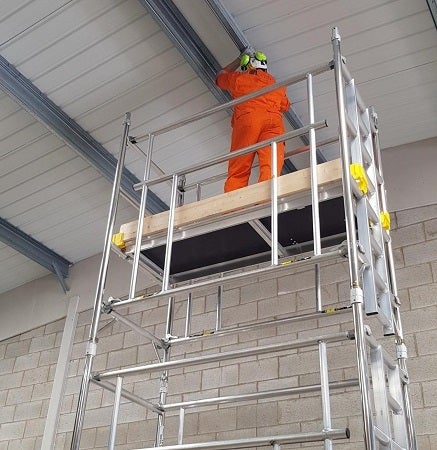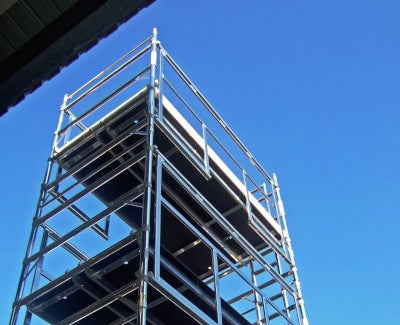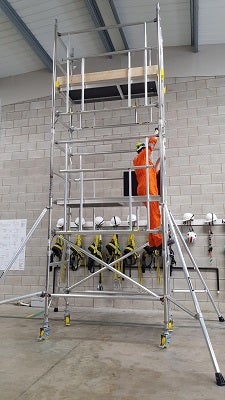Working on aluminium mobile towers is becoming more and more popular in industry, as a safer way of working and avoiding injury.
Rather than use ladders or steps, which account for about 40% of falls from height incidents in the UK and should only be used for up to 30 minutes at a time, mobile access towers give workers more stability, greater protection and the ability to work at height for a longer duration.
Correctly built, mobile access towers offer a safe and economical way of working at height, providing a temporary working platform that offers those working, protection from falling - as they work in an enclosed area with guard rails surrounding them. They also protect those working below from the dangers of falling objects.
PASMA Recommended Towers
There are two common types of mobile access towers recommended by PASMA, (Prefabricated Access Suppliers’ and Manufacturers’ Association), the nationally recognised body throughout the UK regarding safe working on mobile access towers:
3T (through-the-trapdoor) towers
This system requires the worker to assemble the platform whilst sitting down on the trap door of the platform and adding the guard rails, so the workers doesn’t have to stand up until the guard rails are secure. Once the first level of guard rails is fixed, the worker can then climb onto the platform and build the next level and so on.

Advanced Guard Rail Systems (AGR)
Here, guard rails are put up in advance from the level below, so they are in place before the worker accesses the platform. So individual braces are not used, meaning they tower is easier and quicker to erect, and the worker has comprehensive fall protection whilst they are erecting or dismantling the tower.

Both types of tower structures are available in single or double width and:
- are capable of being free standing
- have one or more working platforms
- are assembled using prefabricated components
- have the dimensions fixed by the design
- have normally four legs with at least four castors
- are stable, by supports on the ground and if necessary, by supports to a vertical construction by wall strut
Towers, do still however, present risks for workers and they must only be erected, altered or dismantled by persons who have been trained to do so or who are under direct supervision of a competent scaffolder.
Anyone using tower scaffolds should also be trained in the potential dangers and precautions required during use.
PASMA is the nationally recognised qualification for anyone inspecting, erecting and dismantling mobile towers. Our Towers for Users 1-day course not only covers the regulations and theory essential to safe working practices, but also provides delegates with practical experience in how to erect, dismantle and work safely on a mobile access tower. The course demonstrates how to use both the 3T and AGR methods of erecting towers and the course is about 50:50 theory and practical.





